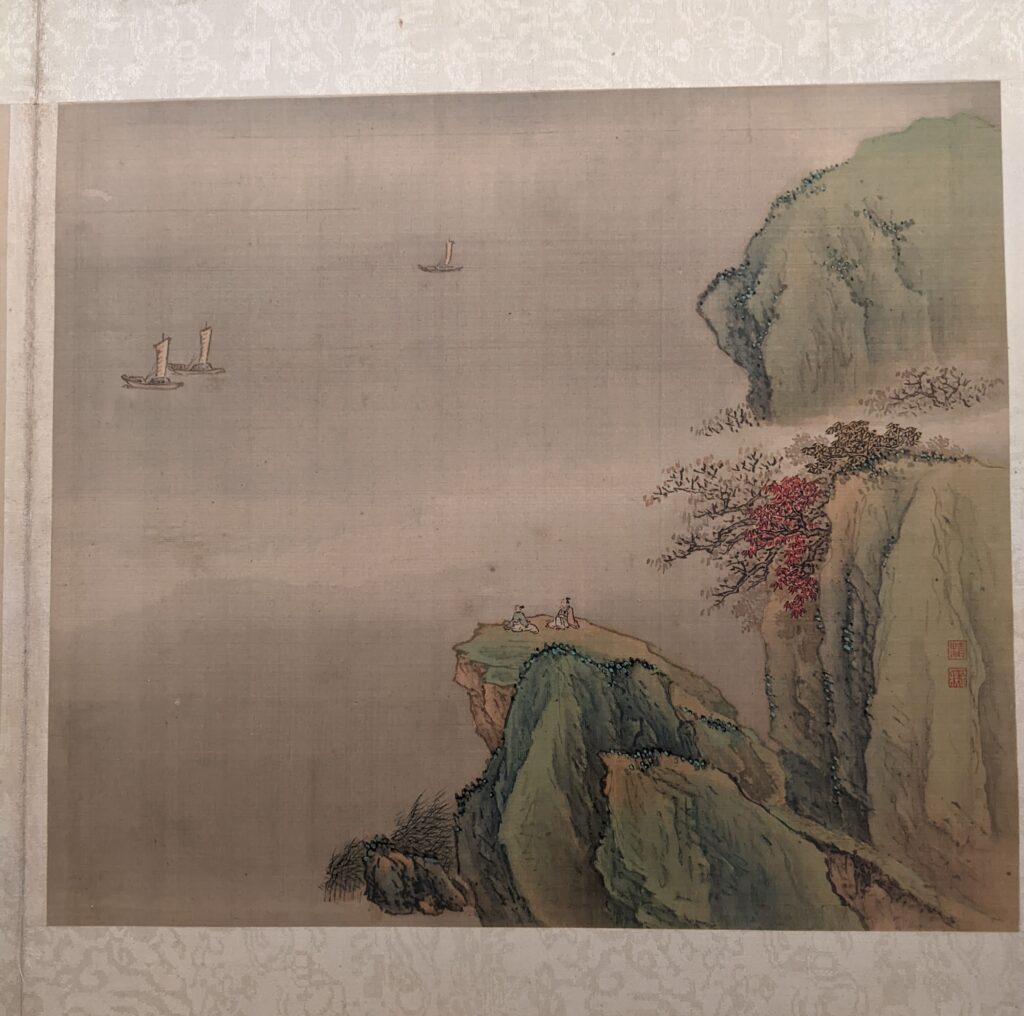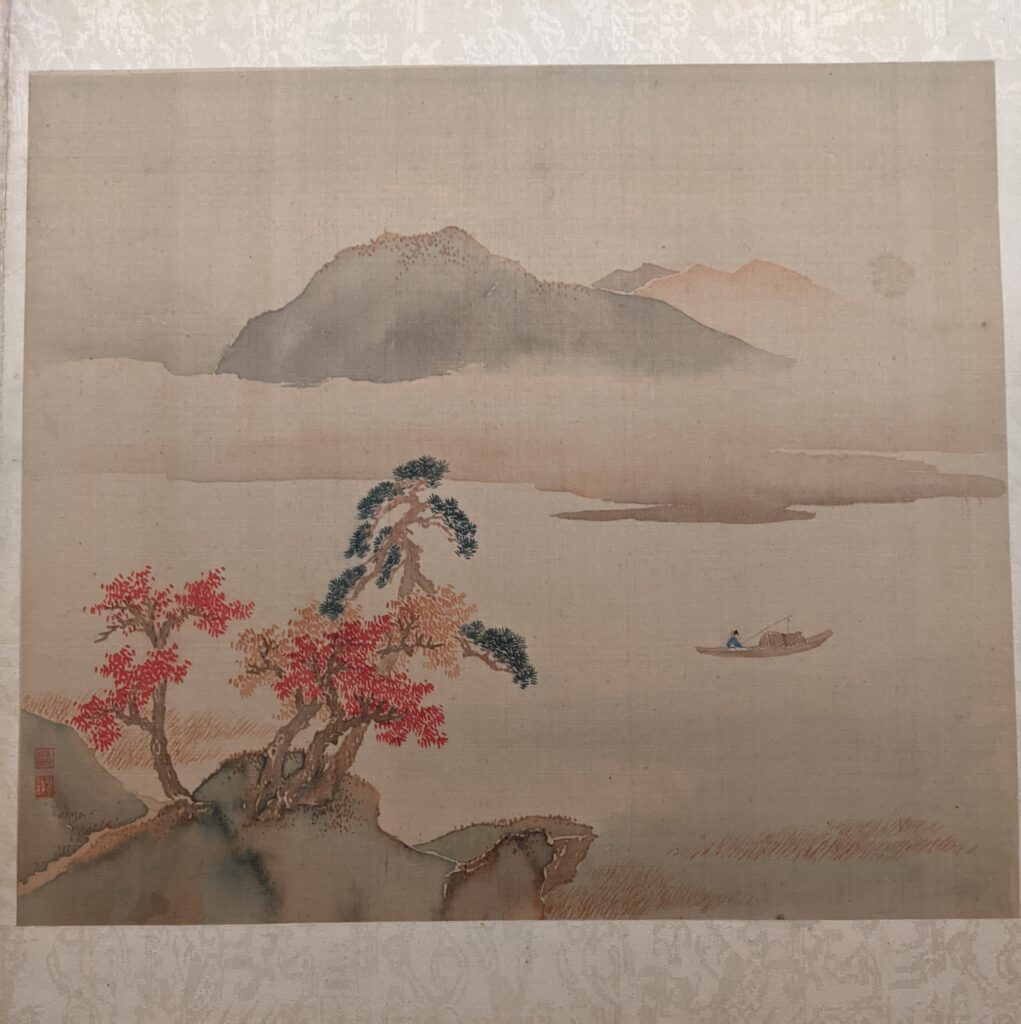The Humbolt Forum is a reconstruction of the baroque palace that was here in an earlier epoch. Afterwards an ugly socialist concrete rectangle took its place. But as of the last two and a half years you can sit in the Lustgarten and look in the direction of the Humbolt Forum and see an elegant stone building in every direction. Sometimes going forwards requires going back.
One of my favourite places in Berlin is the Museum für Asiatische Kunst, the Museum for Asian Art. This is on the top floor of the Humbolt Forum.
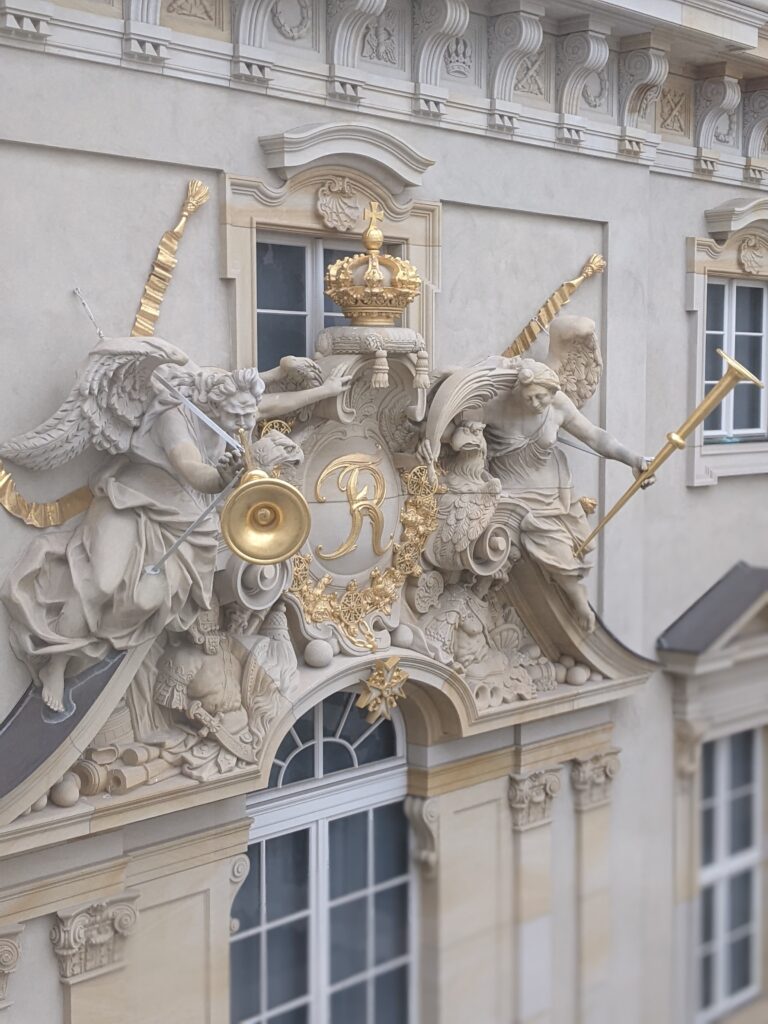
In one of the early sections of this museum you will find Buddhist sculpture and art from north-west Pakistan. Alexander the Great of Macedonia conquered the Gandhara civilisation here in 327 BC, and brought Hellenistic influences in the art. So much of what I saw here was Greco-Buddhist art and sculpture. You can see the robes or the poses or other aspects of the representations of the Buddha having strong Hellenistic influences as you walk around this section of the museum. West melds with East, East melts into West.
The relief carving below was one of my favourite works. A perfect example of the power of meditation to rise above negative emotions.
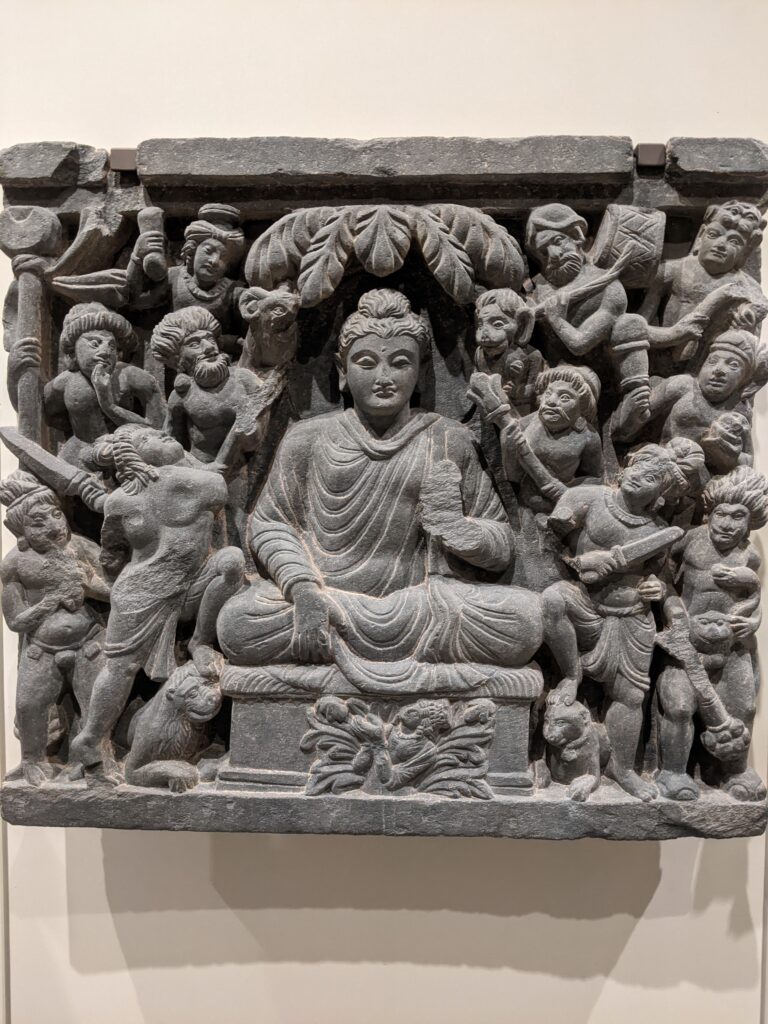
Seven months ago, at the end of 2022, the below stone gate was finished. It was only officially inaugurated four months, at the end of April. But it is one of the coolest things in Berlin: a 1:1 reproduction in beautiful red German sand stone of the Gate of Sanchi. The Gate of Sanchi is one of the high points in the history of world architecture. It is 10 metres tall, 6 metres wide, and weights 150 tons – and the original is one of the oldest stone structures in all of India. In the 1860s, British Lieutenant Henry Hardy Cole made a cast of the East Gate of Sanchi, the main portal of an ancient stupa, for the Victoria and Albert Museum in London. Imagine how hard it would be to make a plaster cast of something this big! When the British came upon this gate the site was neglected by the locals – no longer Buddhist – and lay in total ruin. What a testament to the curiosity about the world of the archeologists of England that they bothered to do this, and that Germany has just paid almost two million Euros to recreate this and put it in the heart of their city.
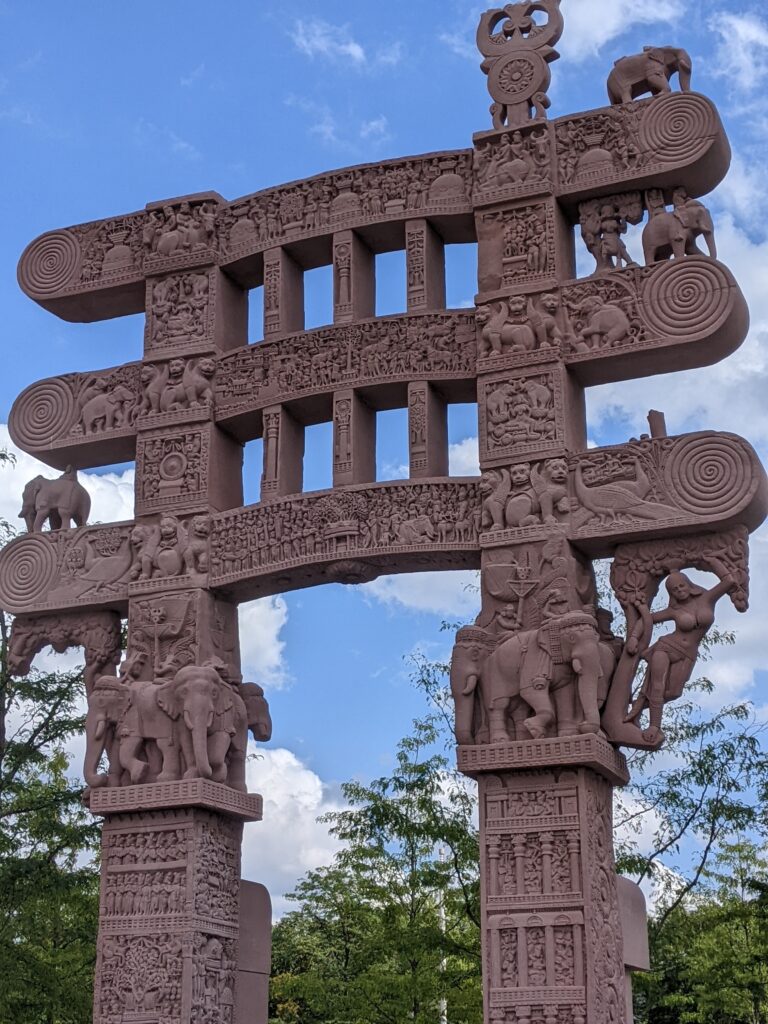
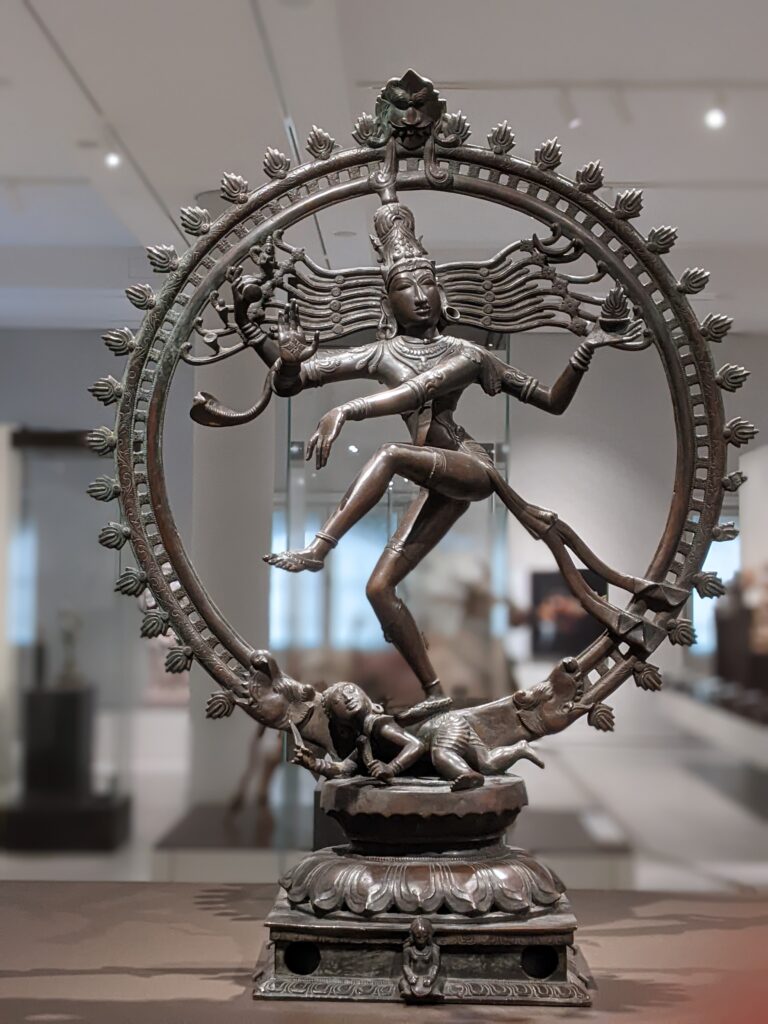
Perhaps my favourite works in the museum are the eighteenth century Chinese paintings on silk. Images to stand in front of and empty one’s mind. I slowed down and focused on the brush strokes that transported me to mists and space, silence and beauty.
